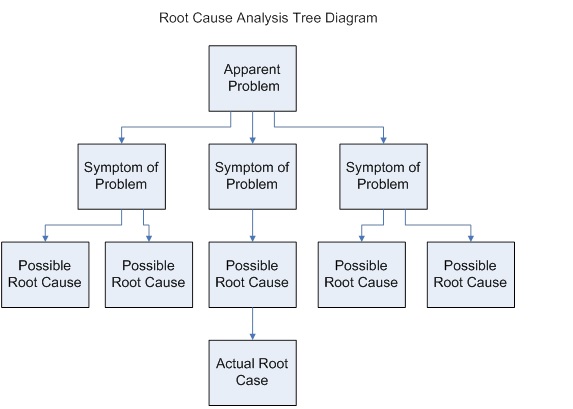|
Orthogonal Defect Classification
Orthogonal Defect Classification (ODC) turns semantic information in the software defect stream into a measurement on the process. The ideas were developed in the late '80s and early '90s by Ram Chillarege at IBM Research. This has led to the development of new analytical methods used for software development and test process analysis. ODC is process model, language and domain independent. Applications of ODC have been reported by several corporations on a variety of platforms and development processes, ranging from waterfall, spiral, gated, and agile development processes. One of the popular applications of ODC is software root cause analysis In science Science is a systematic endeavor that builds and organizes knowledge in the form of testable explanations and predictions about the universe. Science may be as old as the human species, and some of the earliest archeologic .... ODC is known to reduce the time taken to perforroot cause analysis by over a factor of ... [...More Info...] [...Related Items...] OR: [Wikipedia] [Google] [Baidu] |
Software Defect
A software bug is an error, flaw or fault in the design, development, or operation of computer software that causes it to produce an incorrect or unexpected result, or to behave in unintended ways. The process of finding and correcting bugs is termed " debugging" and often uses formal techniques or tools to pinpoint bugs. Since the 1950s, some computer systems have been designed to deter, detect or auto-correct various computer bugs during operations. Bugs in software can arise from mistakes and errors made in interpreting and extracting users' requirements, planning a program's design, writing its source code, and from interaction with humans, hardware and programs, such as operating systems or libraries. A program with many, or serious, bugs is often described as ''buggy''. Bugs can trigger errors that may have ripple effects. The effects of bugs may be subtle, such as unintended text formatting, through to more obvious effects such as causing a program to crash, freezing th ... [...More Info...] [...Related Items...] OR: [Wikipedia] [Google] [Baidu] |
IBM Research
IBM Research is the research and development division for IBM, an American multinational information technology company headquartered in Armonk, New York, with operations in over 170 countries. IBM Research is the largest industrial research organization in the world and has twelve labs on six continents. IBM employees have garnered six Nobel Prizes, six Turing Awards, 20 inductees into the U.S. National Inventors Hall of Fame, 19 National Medals of Technology, five National Medals of Science and three Kavli Prizes. , the company has generated more patents than any other business in each of 25 consecutive years, which is a record. History The roots of today's IBM Research began with the 1945 opening of the Watson Scientific Computing Laboratory at Columbia University. This was the first IBM laboratory devoted to pure science and later expanded into additional IBM Research locations in Westchester County, New York, starting in the 1950s,Beatty, Jack, (editor''Colussus: how ... [...More Info...] [...Related Items...] OR: [Wikipedia] [Google] [Baidu] |
Waterfall Model
The waterfall model is a breakdown of project activities into linear sequential phases, meaning they are passed down onto each other, where each phase depends on the deliverables of the previous one and corresponds to a specialization of tasks. The approach is typical for certain areas of engineering design. In software development, it tends to be among the less iterative and flexible approaches, as progress flows in largely one direction ("downwards" like a waterfall) through the phases of conception, initiation, analysis, design, construction, testing, deployment and maintenance. The waterfall development model originated in the manufacturing and construction industries, where the highly structured physical environments meant that design changes became prohibitively expensive much sooner in the development process. When first adopted for software development, there were no recognised alternatives for knowledge-based creative work. History The first known presentation describ ... [...More Info...] [...Related Items...] OR: [Wikipedia] [Google] [Baidu] |
Software Development Process
In software engineering, a software development process is a process of dividing software development work into smaller, parallel, or sequential steps or sub-processes to improve design, product management. It is also known as a software development life cycle (SDLC). The methodology may include the pre-definition of specific deliverables and artifacts that are created and completed by a project team to develop or maintain an application. Most modern development processes can be vaguely described as agile. Other methodologies include waterfall, prototyping, iterative and incremental development, spiral development, rapid application development, and extreme programming. A life-cycle "model" is sometimes considered a more general term for a category of methodologies and a software development "process" a more specific term to refer to a specific process chosen by a specific organization. For example, there are many specific software development processes that fit the spiral ... [...More Info...] [...Related Items...] OR: [Wikipedia] [Google] [Baidu] |
Root Cause Analysis
In science Science is a systematic endeavor that builds and organizes knowledge in the form of testable explanations and predictions about the universe. Science may be as old as the human species, and some of the earliest archeological evidence for ... and engineering, root cause analysis (RCA) is a method of problem solving used for identifying the root causes of faults or problems. It is widely used in IT operations, manufacturing, telecommunications, Process control, industrial process control, accident analysis (e.g., in aviation, rail transport, or nuclear plants), medicine (for medical diagnosis), healthcare industry (e.g., for epidemiology), etc. Root cause analysis is a form of deductive inference since it requires an understanding of the underlying causal mechanisms of the potential root causes and the problem. RCA can be decomposed into four steps: * Identify and describe the problem clearly * Establish a timeline from the normal situation until the problem ... [...More Info...] [...Related Items...] OR: [Wikipedia] [Google] [Baidu] |


